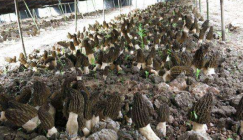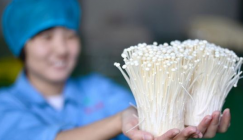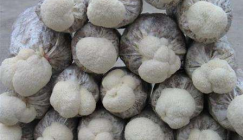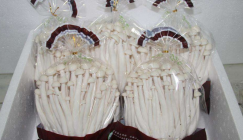It is usual to prepare mushroom compost by utilizing livestock and poultry dung, straws and wheat straws. Composting is usually done in the early and middle of July, the proportion of manure and straw should be 7 to 3 or 6 to 4. For straw materials, firstly dry in the sun and then cut off. For manure materials, smash before drying. Other materials include a small number of gypsum powder and superphosphate. Soak compost in clean water or urine, build heaps by a layer of grass and a layer of dung. After that, cover straw matting to keep warm and wet.
3-4 days after building heaps, the first time of pile-turning could be conducted, what’s more, water could be sprayed so as to warm up under the condition of moisture shortage. After 7-8 days, the second time could be arranged and it is advisable to add 1.5kg of gypsum powder in each 100 square meters of compost. Next, the third time could be done after 11-12 days and it is practicable to add 150g of Superphosphate in each 100 square meters of compost. Primary fermentation could be accomplished 13 days or so after piling up.
Remove materials into mushroom house while they are hot, spread out on fungus shelves, close the inner windows, quickly lift the room temperature to 60 degrees or so and keep for 2-3 hours. In later time, cool down to about 52 degrees and keep for 4-7 days. People could lift the room temperature by utilizing coal stove or steam pipeline and remain certain inner humidity, which highlights secondary fermentation.
Secondary fermentation is a kind of new technology on mushroom cultivation, which responds to the effect of killing pests and sundry fungi, producing a large number of beneficial microbes on compost and excluding ammoniacal odour. The activities of thermophilic microorganism greatly improved the texture of substrate and increased the nutrient substances absorbed and utilized by mushroom.

 LATEST NEWS
LATEST NEWS

 MOST POPULAR
MOST POPULAR




